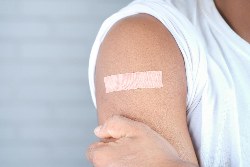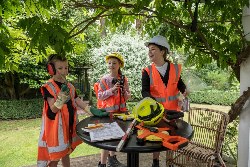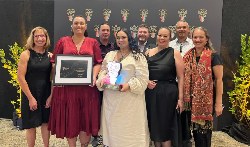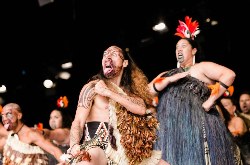Melanoma Victim Wishes She Could Turn Back Time
Melanoma Victim Wishes She Could Turn Back The Clock
SunSmart Week 9-15 November
8 November
2008
Philippa Ashford is paying a huge price for years spent baking in the sun.
Six years ago Philippa, a 57-year-old Auckland tourism promoter, had a melanoma removed from her lower leg.
“I would describe it as a freckle rather than a mole, a freckle that got bigger over time and changed colour slightly.”
The melanoma, discovered by her GP, was quite advanced and Philippa believes if it had been left any later it would probably have taken her life. Instead, she has a 15-centimetre scar on her lower leg and a dent where a big chunk of tissue was cut out.
Around 1800 New Zealanders are diagnosed with melanoma every year and about 300 die each year from skin cancer.
Just why our rates are so high and what can be done about it, is the subject of a Melanoma Summit being held in Wellington on November 14. Billed ‘the most important day under the sun’ the meeting will bring together international experts who will present the latest research on one of New Zealand’s most devastating cancers.
One thing that is known is that people who develop melanoma later in life have usually experienced one or more episodes of sunburn. The risk is increased if sunburn occurs during childhood or adolescence.
‘Never let your child get sunburnt’ is a key message of SunSmart Week running from 9 to 15 November.
Wayde Beckman of the Health Sponsorship Council (HSC) says the message is aimed at parents, particularly of children, aged 8 to 12.
“It is such a crucial message, because we know excessive exposure to ultraviolet radiation (UVR) and sunburn before the age of 20 increases the risk of developing melanoma in later.”
Philippa Ashford can vouch for that. As well as the life-threatening lesion, she has had another four early-stage melanomas removed, as well as a host of other skin cancers. She has no doubt a life of sun worship is to blame.
“From the age of about 12, I lived in the sun and I got burnt, badly, loads of times.”
Philippa believes most of the damage was done during summer holidays in Fiji and the Gold Coast and then as a teenager, when her family moved to Australia.
“We had a pool and beaches nearby. For my friends and I it was all about getting a tan.”
Philippa, who has fair, freckly skin and blue eyes, says she used to burn easily and remembers painful blistering and peeling. As an adult, she says she tried to avoid burning but still sun bathed regularly.
“Having a tan seemed glamorous back then but there’s nothing glamorous about my life now. I go to the specialist every six months to have skin cancers removed. I often need stitches that have to be removed a couple of weeks later. It’s not an experience I would wish on anyone.”
Now the woman who used to seek a tan at every opportunity covers up in the sun. She has a collection of wide-brimmed hats, wears her husband’s old business shirts when gardening and wears white cotton gloves while driving to protect her, already scarred, hands.
“I've learnt my lesson too late but I think people just need to realise that this is a deadly disease and that, in pursuing a tan, they are dicing with death. Believe me it’s just not worth it.”
ends


 NZEI Te Riu Roa: Mandated Single Approach To Reading Will Not Work
NZEI Te Riu Roa: Mandated Single Approach To Reading Will Not Work The Conversation: Could The School Phone Ban Work?
The Conversation: Could The School Phone Ban Work? Public Health Communication Centre: To Avoid A Measles Epidemic, Aotearoa Must Close The ‘Immunity Gap’
Public Health Communication Centre: To Avoid A Measles Epidemic, Aotearoa Must Close The ‘Immunity Gap’ Heritage New Zealand: Kid-friendly Archaeology Resource Kit Launched As Part Of Archaeology Week
Heritage New Zealand: Kid-friendly Archaeology Resource Kit Launched As Part Of Archaeology Week Tatai Aho Rau Core Education: Cyber Skills Programme For Tamariki Recognised At Māori Language Awards
Tatai Aho Rau Core Education: Cyber Skills Programme For Tamariki Recognised At Māori Language Awards Waitaha Kapa Haka: Waitaha-South Island Kapa Haka Celebrates 60th Anniversary
Waitaha Kapa Haka: Waitaha-South Island Kapa Haka Celebrates 60th Anniversary